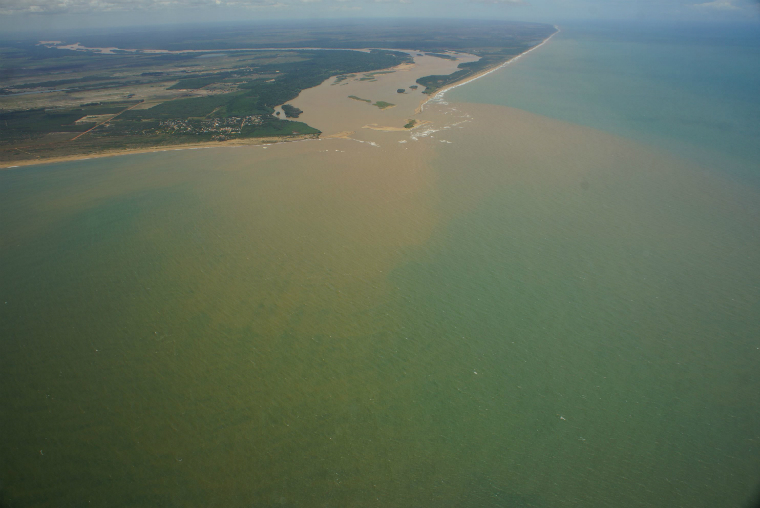The study was carried out in the marine region near the mouth of the Doce River
The water quality monitoring team of the Renova Foundation collects daily water samples and weekly sediment samples at 28 points along the coast of Espirito Santo. This monitoring is taking place since November 17, 2015, before the arrival of the tailings to the coast.
Of the 28 points monitored:
● 10 are situated up to five kilometers from the mouth of the Doce River;
● 12 are situated further than five kilometers from the mouth of the Doce River;
● 6 are in the Environmental Protection Area (APA) Costa das Algas and in the Wildlife Refuge (RVS), in Santa Cruz, district of Aracruz (ES)
This monitoring network comprises the analysis of approximately 33 parameters for water quality assessment and 22 parameters for sediment assessment. In addition, an assessment was carried out to identify the presence of tailings deposited at sea. This evaluation was made based on visual observations made with the aid of equipment known as ROV (Remote Operated Vehicle).
The objective of this work is to evaluate water and sediment conditions in relation to quality standards. All analyses are performed based on the parameters indicated by the National Council of the Environment (Conama), such as turbidity, aluminum, iron and manganese, both dissolved and total. These are regarded as relevant parameters, i.e. those previously identified as influenced by the Fundão dam collapse. The results are compiled in quarterly reports sent and analyzed by the State Institute for Environment and Water Resources (IEMA).

In total, 28 points are monitored at the mouth of the Doce River, on the coast of Espirito Santo. | Photo: Release
RESULTS
According to the report, the parameter group consisting of aluminum (total and dissolved), iron (total and dissolved), manganese (total and dissolved), color (true and apparent), total suspended solids and turbidity, were observed at higher levels after the arrival of tailings at sea and during the 2015-2016 and 2016-2017 rainy seasons.
These parameters present a tendency to decrease when the distance to the mouth of the Doce River increases, especially when comparing APA and the points closer to the river mouth. On the other hand, the other parameters showed a tendency to decrease and to a large extent returned to the conditions prior to collapse.
Access the report and attachments in full.
